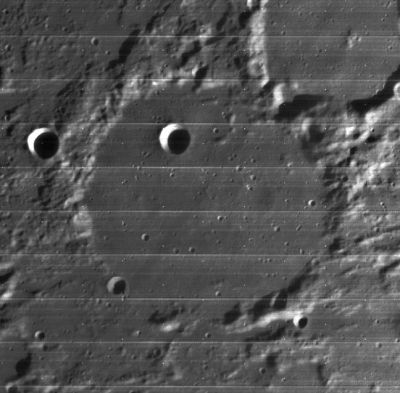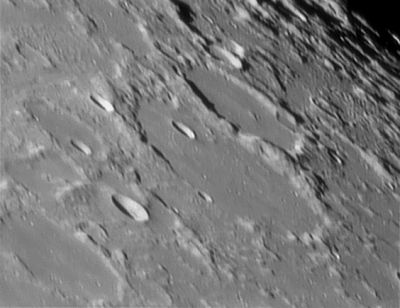Arnold
Contents
Arnold
|
Lat: 66.8°N, Long: 35.9°E, Diam: 94 km, Depth: 0.95 km, Rükl: 5, pre-Nectarian? |


Left: LO-080-h2 Right: François Emond
Images
LPOD Photo Gallery Lunar Orbiter Images
Maps
(LAC zone 4C4) USGS Digital Atlas PDF
Description
Description: Elger
(IAU Directions) ARNOLD.--A great enclosure, bounded, like so many other formations hereabouts, by straight parallel walls. There is a somewhat smaller walled-plain adjoining it on the E.
Description: Wikipedia
Additional Information
- Depth data from Kurt Fisher database
- Westfall, 2000: 0.95 km
- Cherrington, 1969: 2.01 km
- Arnold A central peak height
- Sekiguchi, 1972: 0.5 km - fatastronomer fatastronomer
Nomenclature
- Christoph Arnold (December 17, 1650 - April 15, 1695) was a German amateur astronomer. Interested in astronomy, he spotted the great comet of 1683, eight days before Hevelius did. He also observed the great comet of 1686. In 1686, Kirch went to Leipzig. There, he observed the great comet of 1686, together with Gottfried Kirch. There, Kirch met his second wife, Maria Margarethe Winckelmann (1670-1720), who had actually learned astronomy from Arnold. Arnold observed the transit of Mercury in front of the sun on October 13, 1690. For this work, he received some money and a tax exemption from the town of Leipzig. He was the author of Göttliche Gnadenzeichen, in einem Sonnenwunder vor Augen gestellt (Leipzig, 1692) which contains an account of the transit of Mercury in 1690.
- According to Whitaker (p. 218), this name was introduced by Schröter.
- See also James R. Arnold (1923-2012); pioneer in the field of planetary and space chemistry. - DannyCaes Mar 19, 2015
LPOD Articles
Bibliography
James R. Arnold in the Sourcebook Project (William R. Corliss)
- In Mysterious Universe, a handbook of astronomical anomalies (1979) :
- Page 249: Lunar Research: No Agreement on Evolutionary Models (Allen L. Hammond, Science, 1972).